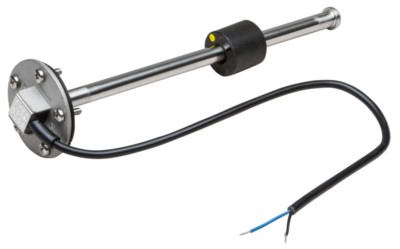The boat fuel gauge is one of the items you are bound to find on the fuel tank or main tank of a motorised boat, whether it is an outboard or inboard. The reason for this is simple; it allows you to keep an eye on the fuel level in order to avoid unpleasant surprises due to running out of fuel. The problem is that this measuring device can also break down or malfunction.
Boat tanks are also equipped with fuel gauges
It goes without saying that as a motorised model, an outboard or inboard needs to be equipped with a fuel tank to ensure that it is supplied when sailing. And as you might expect, this accessory is also equipped with a boat fuel gauge to help you keep a close eye on the fuel level.
So it would be useful for you to know that all the models currently available in 12, 22 and 30 litre capacities are equipped with them. Better still, you can take a direct reading with the tank in the horizontal position for the 22 and 30 litre models, thanks to an integrated display.
In most cases, this type of equipment is also associated with an indicator light or a needle counter or a digital indicator to alert you to a drop in level.
How do I know if the boat fuel gauge is faulty or not?
Like all equipment, the boat fuel gauge may also have problems with its functionality. But to find out without risking running out of fuel at sea or in the middle of a lake, you need to have a minimum of knowledge to detect the warning signs. These include
- A marked difference in what the gauge says and how much fuel you actually have;
- The gauge says the tank is empty, when it is full;
- The gauge says the tank is full, when it is empty;
- The gauge fluctuates when it shouldn’t.
In other words, all these indicators suggest that there is a problem, which is sometimes caused by faulty wiring or a bad fuse. If this is the case, then you need to call in a specialist. This is the best solution if you don’t want your entire boat engine to fall apart.
It may also be useful to know that there is another way to find out, two to be precise:
- Lift the tank and measure the ohmic value with a multimeter;
- Raise or lower the float of the gauge manually.
In both cases, the ohmic value of the gauge should follow the upward or downward movement of the float if the fuel gauge is working properly. If it is not, it is out of order.






